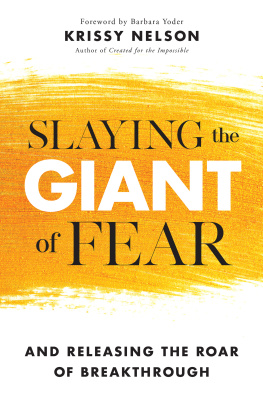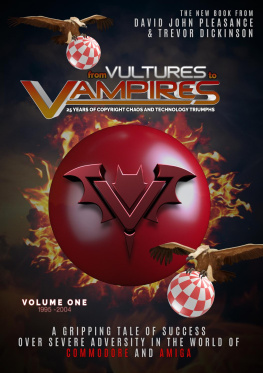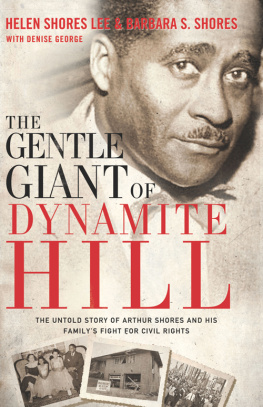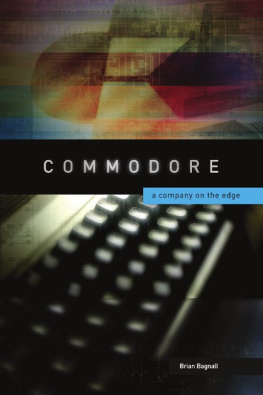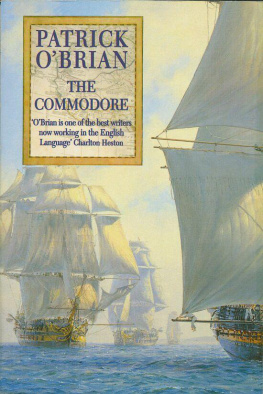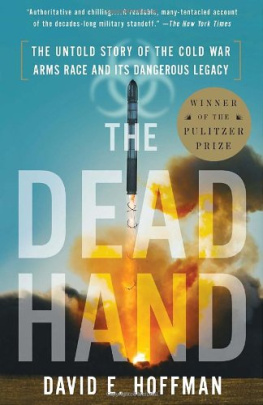David Pleasance - Commodore the Inside Story: The Untold Tale of a Computer Giant
Here you can read online David Pleasance - Commodore the Inside Story: The Untold Tale of a Computer Giant full text of the book (entire story) in english for free. Download pdf and epub, get meaning, cover and reviews about this ebook. genre: Detective and thriller. Description of the work, (preface) as well as reviews are available. Best literature library LitArk.com created for fans of good reading and offers a wide selection of genres:
Romance novel
Science fiction
Adventure
Detective
Science
History
Home and family
Prose
Art
Politics
Computer
Non-fiction
Religion
Business
Children
Humor
Choose a favorite category and find really read worthwhile books. Enjoy immersion in the world of imagination, feel the emotions of the characters or learn something new for yourself, make an fascinating discovery.
- Book:Commodore the Inside Story: The Untold Tale of a Computer Giant
- Author:
- Genre:
- Rating:3 / 5
- Favourites:Add to favourites
- Your mark:
- 60
- 1
- 2
- 3
- 4
- 5
Commodore the Inside Story: The Untold Tale of a Computer Giant: summary, description and annotation
We offer to read an annotation, description, summary or preface (depends on what the author of the book "Commodore the Inside Story: The Untold Tale of a Computer Giant" wrote himself). If you haven't found the necessary information about the book — write in the comments, we will try to find it.
Commodore the Inside Story: The Untold Tale of a Computer Giant — read online for free the complete book (whole text) full work
Below is the text of the book, divided by pages. System saving the place of the last page read, allows you to conveniently read the book "Commodore the Inside Story: The Untold Tale of a Computer Giant" online for free, without having to search again every time where you left off. Put a bookmark, and you can go to the page where you finished reading at any time.
Font size:
Interval:
Bookmark:
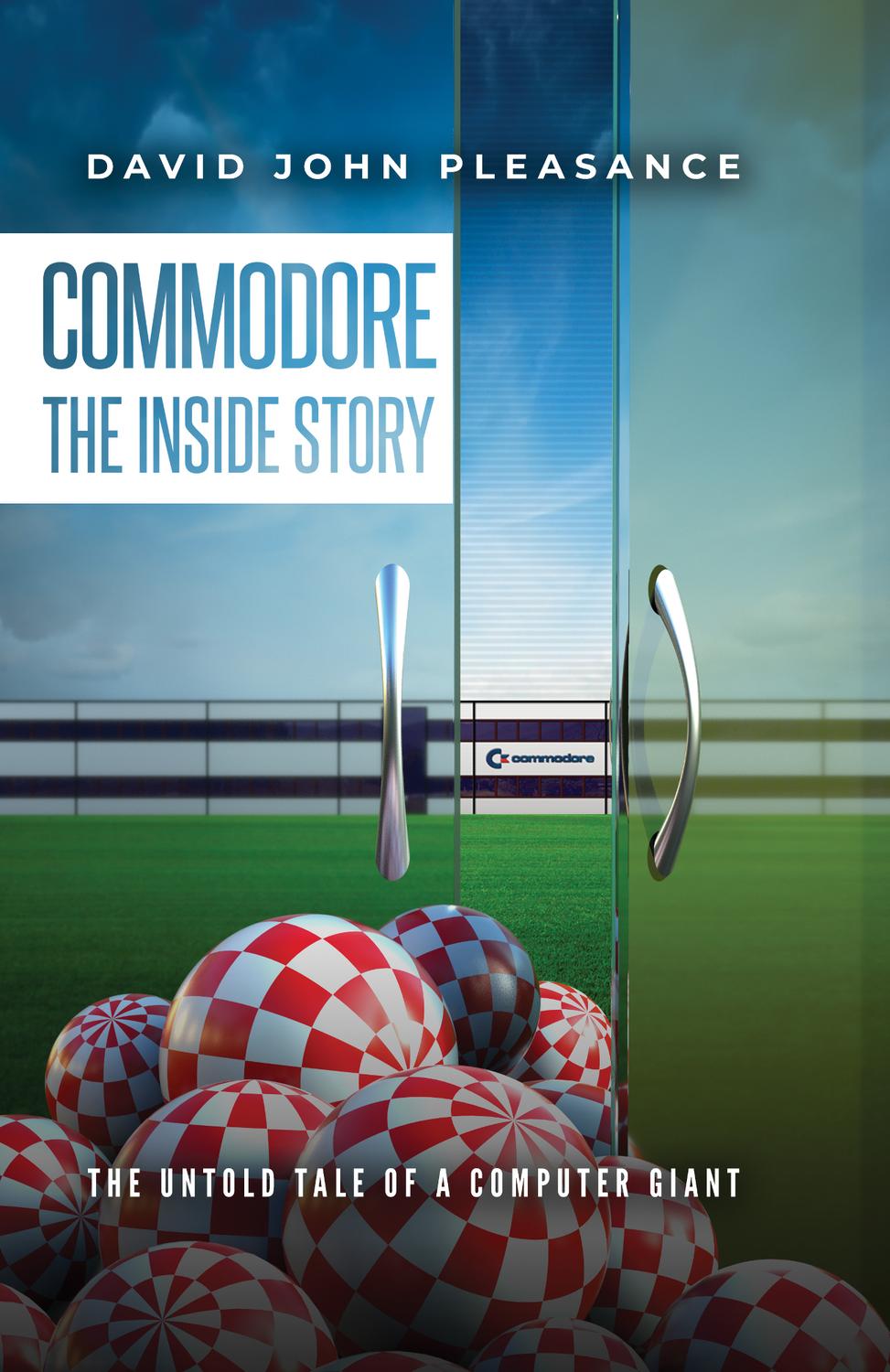
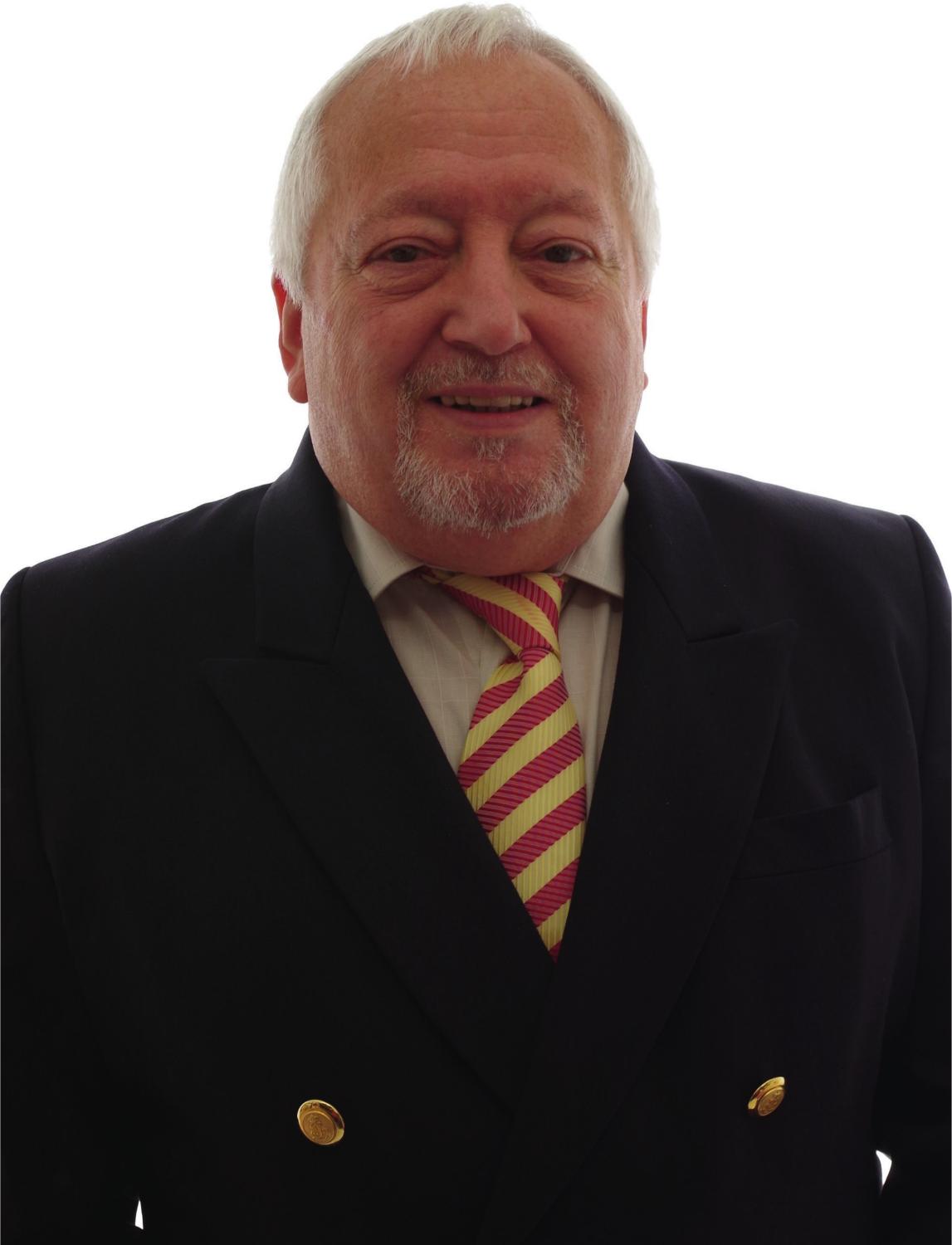
This book is dedicated to:
My first wife Sheila Floyd and our sons Marcel and Emile; my sister Susan and her husband Rob Mullin; my siblings, Christopher, Shane and Sandra; and my second wife Francia Mercedes Gomez and our daughter Lucidely.
My team at Commodore UK: Dawn Levack, John Smith, Kieron Sumner, Jonathan Anderson, Pauline Wakefield, Kelly Sumner, Bob Burridge and the late Nigel Jones.
And in loving memory of my parents June and Eddy, and my younger sister Stephanie.
- One more untold Amiga story
RJ Mical - RUN
Dave Haynie - Commodore UK The early days
Tim Chaney - Memories from the soft side
Gail Wellington - My time at Commodore Germany
Peter Kittel - Design many, ship few
Beth Richard - Memories of a young recruit
Miguel De Gracia - Commodore memories
Joe Benzing - How the Amiga changed my life
Franois Lionet - Death by management, customers and users
Wim Meulders - Its all in the value
Kieron Sumner - A love letter to AROS
Stephen Jones - The story of the Commodore 65
Carlo Pastore
Ive had an almost symbiotic relationship with Commodore and Amiga computers.
My first computer was a Commodore PET CBM 4032, which arrived the same week as my eldest daughter, Emma. At the time, I was the technical applications manager at the company I worked for and was tasked with supervising the hardware and software development team as we added real-time data acquisition minicomputer systems to our well-site geological and engineering services.
I knew virtually nothing about the evolving microcomputer craze, so I decided to build my own Sinclair ZX80 and teach myself the rudiments of computing. Fortunately, one of my hardware engineers convinced me to look at a real computer like the Commodore PET or Apple II, and after reviewing all the microcomputer magazines of the day, I rejected the Apple II and chose the Commodore PET. Commodore was very well supported in the UK at the time and I was soon writing BASIC programs and PEEK-ing and POKE-ing with the best of them. It was the start of my Commodore addiction.
The PET was replaced by a Commodore 64, which I bought in 1983 having seen a demo of International Soccer playing in the window of a computer store in Aberdeen, Scotland. (This also coincided with the birth of my second daughter, Rachel. Fortunately, the link between my acquisition of new computers and the birth of children stopped at this point!) I then upgraded the C64 to a Commodore 128 and, in early 1986, I was transferred to Houston, Texas, to restructure a failing division of our parent company. After the relocation, I replaced the C128 with a Commodore 128D.
My transfer to Texas also resulted in my move to the Amiga, although not quite in the manner you might expect.
During a particularly violent late-summer storm in 1988, my Commodore 128D, which was connected to the phone line by a 1200 baud modem, was zapped by a lightning strike. With the insurance cheque, I purchased an Amiga 2000.
Shortly afterwards, I started my own company and relocated to Cyprus. From that time onwards, I used a series of big-box Amigas in my business for video and graphics work, and to create technical manuals and sales brochures for our growing international business. In 1990, I added the newly released Amiga 3000.
When I moved back to the UK in 1992, I purchased several Amiga 4000s for my business from Commodore UK, and in 1994, I bought a couple of Amiga CD32s for my children (honest). Actually, I had a running joke with my daughters that I really wanted an Amiga 5000 but, as history shows, it was not to be. Commodore International was in a death spiral and, despite releasing the Amiga CD32, declared bankruptcy that April.
After the bankruptcy, David Pleasance and Colin Proudfoot kept the UK business afloat and put together a creditable but ultimately failed bid to purchase Commodores assets in a management buyout attempt. Like most Amigans, I had followed the Amigas fate after Commodores fall and crossed my fingers that the buyout would be successful. Unbelievably, under their joint stewardship, CBM UK survived for 14 months after the parent company went under; but after ESCOM acquired most of the Commodore and Amiga assets in 1995, they both left the Commodore and Amiga scene for good. Despite Commodores demise, my company continued to use Amiga computers for all our technical manual and publicity needs up until the turn of the century.
Eventually, I sold my business in 2004, and after 30 years working and travelling around the world, I was looking forward to a relaxing break. I reacquainted myself with the Amiga scene and discovered the Amiga next-generation evolution.
I purchased a Micro-A1-C (A1-c) and Pegasos II in 2005 and began collecting Commodore and Amiga computers. In 2007, I started writing the Amiga Retrospective series of articles for Total Amiga magazine, which later transferred to Amiga Future magazine.
The articles ran for 20 issues until 2010, by which time I had co-founded A-EON Technology to develop a new range of next-generation AmigaOne computers. The first model, the AmigaOne X1000, was released at the end of 2011, and I finally got my A5000 wish when the AmigaOne X5000 was commercially released in 2016.
Keeping it in the family, my youngest daughter Rachel wrote the boot sound for the AmigaOne X1000 and X5000, as well as the music and sound effects to several AmigaOS 4 animations and demos, while my oldest daughter Emma produced artworks for an Amiga graphics package. Its really no surprise as both my daughters were brought up using Amiga computers. At the time of writing, a new entry level machine, the AmigaOne A1222, is currently under beta test.
I met David in person for the first time in 2015 at the Amiga30 event in Amsterdam, celebrating 30 years of the Amiga. Since then, we have met up at several Amiga shows around the world, including in the UK, Germany and Poland, and have become good friends and business partners through our shared interest in FriendUP. He has shared many of his personal inside stories about his time at Commodore while chatting over a few drinks into the early hours of the morning stories such as dealing with Irving Gould and Mehdi Ali, the failed buyout attempt, and what really caused the decline and fall of a company which even in 1992 had almost $1 billion in sales.
I found Davids tales about the inner workings at Commodore fascinating and managed to convince him and Colin to let me interview them both for an Amiga Future article, which was published in two parts in 2016. As an executive producer for both Zach Weddingtons Viva Amiga movie and The Commodore Story documentary by Steven Fletcher, I knew Davids Commodore revelations would appeal to a wider audience, and when he told me he was thinking of writing a book about his experience I encouraged him to put pen to paper.
Most books written about Commodore and the Amiga naturally tend to focus on the groundbreaking hardware and the talented young developers who underpinned Commodores contribution to the microcomputer revolution. Since the Amiga 30th anniversary celebrations, I have been fortunate enough to spend time with many Commodore legends such as RJ Mical, Carl Sassenrath, Dale Luck, Glenn Keller, Dave Haynie and the late, great Dave Needle, among many others. Their stories have become folklore among Commodore and Amiga enthusiasts; however, little has been written from an insiders perspective about the company itself, which during the 1980s was more successful than Apple, creating the best-selling personal computer of all time with the Commodore 64, and going on to release the pioneering Amiga, with its custom chipset and pre-emptive multitasking operating system.
Font size:
Interval:
Bookmark:
Similar books «Commodore the Inside Story: The Untold Tale of a Computer Giant»
Look at similar books to Commodore the Inside Story: The Untold Tale of a Computer Giant. We have selected literature similar in name and meaning in the hope of providing readers with more options to find new, interesting, not yet read works.
Discussion, reviews of the book Commodore the Inside Story: The Untold Tale of a Computer Giant and just readers' own opinions. Leave your comments, write what you think about the work, its meaning or the main characters. Specify what exactly you liked and what you didn't like, and why you think so.


